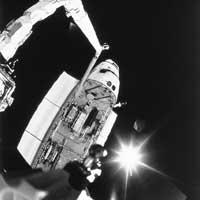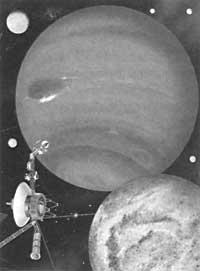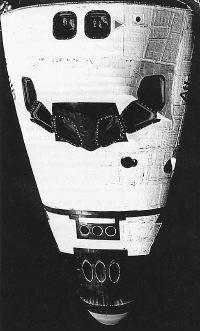Artificial satellites The mirror of land conflicts
2005/02/01 Agirre Ruiz de Arkaute, Aitziber - Elhuyar Zientzia Iturria: Elhuyar aldizkaria
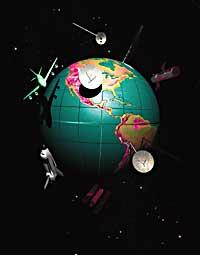
LEO is the closest orbit on Earth. It is about 250 and 1,500 kilometers away from us, and this is where most of the satellites that are used to study the earth's surface are launched. Thanks to them it has been possible to know with great precision the orography of the Earth, since neither the most remote corners can escape nor the Suboceanic. But this same utility has caused the accumulation of hundreds of satellites in the LEO orbit.
The same goes for geostable orbit. It is much further from the earth’s surface, 36,000 kilometers above the equator, and this height allows the entire Earth to be ‘controlled’ with three simple satellites. It is therefore ideal for communications satellites.
Applications are rapidly multiplying, from remote sensing to satellite communication of mobile phones, through telepositivization or control of routes and fleets.
And as satellite technology has begun to shrink, more and more companies and countries have the means to launch their own satellites. In short, they have clear economic and strategic implications, and each country wants to have its own satellites, although for the same application there are hundreds of similar satellites often. According to Javier Armentia, director of the Pamplona Planetarium, “the reasons for this abuse are mainly political and economic, rather than scientific”, so governments and companies do not rely on money when launching satellites. “The clearest case is that of military satellites: Would the Americans trust Russian satellite data? And is it not logical that the Israelis want to have their own spy satellites?”
From a scientific point of view, the only thing that is required to the technology of the satellites is to have coverage throughout the territory, send the data with the least possible margin and ensure that when the satellite becomes obsolete there will be a substitute for it in order to continue with its work. “What happens is that in the end the data of scientific satellites are also used economically, which makes the institutions of most countries want to have their own space platform,” says Armentia.
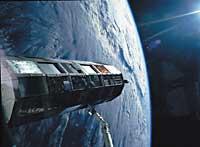
In the short term, however, space agencies will have real problems whenever they want to put a new satellite into orbit.
Javier Armentia is committed to limiting satellite launches. “Rationality and moderation of expenses should be considered. What happens is that it is really difficult to meet these criteria, since in these new technological sectors in development the surpluses are very high. I do not expect to regulate it in the short term. Those who would have to think about this issue are not very concerned. I believe that control of international organizations should be promoted, that countries and companies should establish mandatory criteria.”
Space junk
The indiscriminate launch of satellites has also generated a more serious problem: trash. Only 6% of the objects that are rotating around the Earth are useful; the rest are waste: the old abandoned satellites, the fragments released from the spacecraft by putting into orbit the satellites, the exploded apparatus, and the smaller residues generated by the shock of all these residues. Our sky is therefore full of nuts, screws, paint marks, tools, knives and old spaceships. Thousands of tons of metals dancing around Earth without any task, hundreds or thousands of years in orbit.
These residues annoy new containers that are often thrown, as the risk of collision with one of these types is increasing. The biggest problem is the enormous speed of waste. Given that LEO orbit residues reach an average speed of 10 km/s, and that a rifle bullet reaches a speed of 0.8 km/s, the impact energy of a space residue of only 80 grams is expected to be equivalent to a kilogram of TNT explosion. That is, a satellite of 500 kilos is broken. These disasters have occurred and left enormous economic damage. Not only that, the life of astronauts is in danger, as a tiny waste of a millimeter can put it.
If the number of satellites launched continues to increase, garbage becomes a serious problem. It is increasingly difficult to launch the rocket and the space residues do not spoil, so the desire to know space and conquer can limit the possibility of launching nothing on Earth in the future.
Space collectors
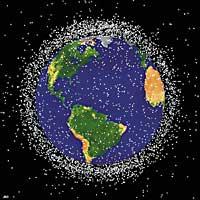
To cope with the problem of space garbage, satellites have begun to protect themselves with robust screens, which considerably increases the weight and cost of the satellite and only serves to protect themselves from residues below 1 cm.
The only way to avoid waste greater than 10 cm is by leaking. But satellites need a special propulsion system for this and, of course, the way to detect the source of waste. Therefore, the most important telescopes on Earth are producing a waste catalogue. The Teide Observatory, for example, has catalogued some of the residues of the GEO orbit.
It is not enough. There are still many clues that cannot be seen from Earth and space agencies have had to think of more complex projects. The German project Teresa, for example, has a great objective: it has proposed collecting waste from space, creating a space garbage truck. This container would collect the waste and lead it to the lower orbit to take the path to the atmosphere and disintegrate it. However, NASA wants to solve the problem from Earth: It consists of placing high-intensity lasers on the ground and hitting the residues to change their speed and remove them from the orbit.
However, they still do not know if the proposed projects are technically viable, so for the moment they must continue to verify their location.
Military espionage
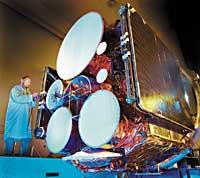
Military satellites have a lot to say in the wildness of artificial satellites. They are, of course, the most unknown of all satellites, but it is believed that in space they are as many as civilian satellites. In fact, they have already become one of the most important weapons for war. Local photographs can be in both visible and infrared light, in three dimensions, and are used to map territories accurately.
Finally, political conflicts on Earth are also reflected in space. Israel, for example, uses them to protect the Arab countries; the Ofek-5 satellite launched in 2002 constantly spy on Iran, Iraq and Syria. And the U.S. has used satellites in the Iraq war and in the fight against terrorism to see in detail the movements of Afghan soldiers. From the military base of a secret CIA agency was launched the satellite KH-11, ultrasound spy, although the American government has not given any further explanation. According to experts, the satellite can receive telephone conversations and distinguish on surface small objects up to 10 centimeters. That is, they serve to continuously track a suspicious person.
Incidents at the International Space Station
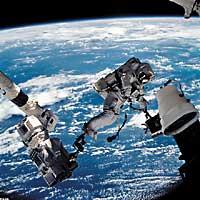
The International Space Station, even before birth, was in danger of death. Its launch in 1999 resulted in a series of conflicts between researchers from the United States and Russia. Two modules of an old rocket carried directly the possibility of colliding with the new station and for a week researchers from both countries blamed each other. Meanwhile he wanted to divert the station but did not comply with any order. Finally, the scare went bankrupt as the rocket passed seven kilometers from the station.
Garbage remains one of the main problems of the International Space Station. It has to spend more than 10 years in space and has an area of 108x74 meters, so experts believe it will collide with thousands of particles. The problems have been put by the engineer from all over the world in the search for solutions.
The hundreds of satellites watching Earth launch into the Earth's Lower Orbit. From there they glimpse the health and beauty of the Earth.
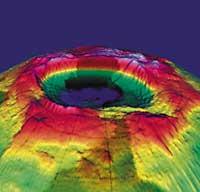
Satellites
watching the atmosphere surprised
the world when they discovered that a hole created in the ozone layer could endanger life on
Earth.
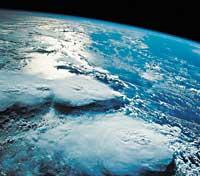
Climatic fluctuations Thanks
to the weather satellites, a network for the prevention of climate accidents has been created. It is surprising: while the most dangerous storms cause a disaster on Earth, the satellite captures the most beautiful images in history.
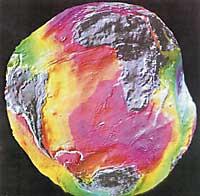
The SMOS project aims to measure land surface moisture and ocean salinity using high-resolution images. To do this, it analyzes the
electromagnetic noise emitted by the Earth. In order to better understand the relationship between the water cycle and meteorology, it will send
every three days complete maps of the Earth.
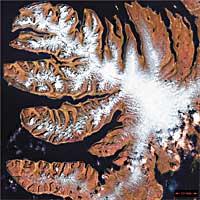
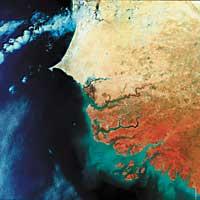
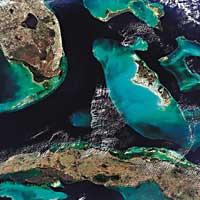
Satellites have become a basic working tool for orographic
scientific research. In the image, the topography of the oceans. The most hidden corners of the Earth also reveal its beauty in front of these satellites. In the images, fjords from western Iceland, Bahama Islands and Guinea Bissau.

Gai honi buruzko eduki gehiago
Elhuyarrek garatutako teknologia




